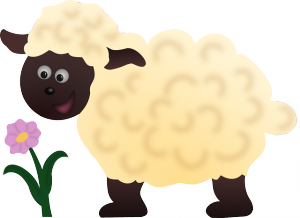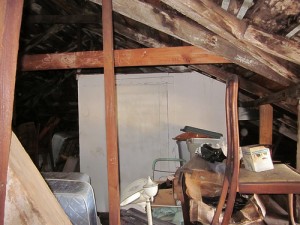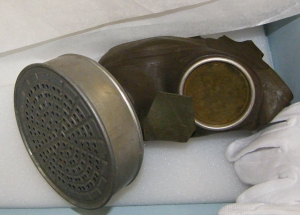Communication about objects, no matter what they are, is made easier if all parties know exactly what is meant by the names of those objects. I offer to you the following scenario:
 The Extremely Amateur Garden Club is having its annual meeting and plant swap. A group of members is gathered around a robust pot of something green and lacy and hairy covered with deep purple flowers. Mrs. Soapwort exclaims, “Why, I remember those from my grandmother’s garden. That’s a Hairy Purplecup!” Mr. Thymus rubs his jaw and grumbles, “No, no, my brother used to raise those commercially. They’re Lake Lucy Laceleafs, anybody knows that!” “Laceleaves,” mutters his wife, who used to teach English. “Actually, when I was a kid, my mother made tea out of the leaves and called it False Chamomile.” At that point, they all decide to consult Dr. Plantaverde, the University extension agent. “You’re all right,” he says. “Those are all common names for jargonius confusus, or Common Aliasleaf. It probably has other names in other parts of the world, and some of those names could easily refer to more than one plant. However, if you wanted to specify this particular plant anywhere in the world, its two part scientific name would identify it unmistakably.”
The Extremely Amateur Garden Club is having its annual meeting and plant swap. A group of members is gathered around a robust pot of something green and lacy and hairy covered with deep purple flowers. Mrs. Soapwort exclaims, “Why, I remember those from my grandmother’s garden. That’s a Hairy Purplecup!” Mr. Thymus rubs his jaw and grumbles, “No, no, my brother used to raise those commercially. They’re Lake Lucy Laceleafs, anybody knows that!” “Laceleaves,” mutters his wife, who used to teach English. “Actually, when I was a kid, my mother made tea out of the leaves and called it False Chamomile.” At that point, they all decide to consult Dr. Plantaverde, the University extension agent. “You’re all right,” he says. “Those are all common names for jargonius confusus, or Common Aliasleaf. It probably has other names in other parts of the world, and some of those names could easily refer to more than one plant. However, if you wanted to specify this particular plant anywhere in the world, its two part scientific name would identify it unmistakably.”
The expert was using a type of controlled vocabulary; in this case, the system of binomial nomenclature we all learned about in high school science classes. It allows scientists all over the world, no matter what language they speak, to know exactly what type of plant of animal is meant by jargonius confusus. Let’s go now to our museum. A donor has given us a collection of furniture, bottles and instruments from a doctor’s office. I have no idea what a lot of these things are called. Fortunately, our family doctor is also a long time friend. I call him in to provide proper medical terminology instead of the “chrome-plated thingy with a long wire sticking out of it with a little ball on the end” that is all I know to call it. He brings with him a retired doctor friend who practiced with just the types of instruments that came with this donation. The two have a great time examining the collection. I notice that, sometimes, one of them calls an item by one name and the other calls it something different. Usually they come to some sort of agreement, so I’m reasonably sure that the term I am writing down in the inventory is the equivalent of the scientific name for our potted purplecup.
That’s not the end of it, though. Most museums, in order to facilitate communication about artifacts, make use of their own controlled vocabularies. In the case of museums that collect man made objects, many use a book called Nomenclature1, in which the author has classified artifacts according to the way they are used. There are ten categories, such as Furnishings or Tools and Equipment for Communication, under which are numerous sub-categories such as Bedding and Floor Coverings, or Written Communication Tools & Equipment. If you look under each of these sub-categories, you will find a list of words. These are the names that you are allowed to use for artifacts in this sub-category. In this way, if I call up a museum and ask to borrow a dining chair, they will know not to send me a hall chair. If I ask for a sofa, they will know not to send me something that only has an arm at one end. However, problems arise when the only name you know to call something isn’t in the book. Sometimes you have to find the closest approximation and then put the name you want to use in the description. Now, in the best of all possible worlds, Nomenclature would come with definitions. Since it doesn’t, I often have to resort to a dictionary, or to the Getty’s Art & Architecture Thesaurus2, a wonderful on-line vocabulary that includes definitions. Or, in a pinch, I can rely on my pair o’ docs.
Anne T. Lane
- Nomenclature is a controlled vocabulary for the classification of cultural objects invented and first published by Robert G. Chenhall in 1978. Refined ever since it is a standard work for classifying cultural artifacts in U.S. museums. Version 4.0 was published recently:
Paul Bourcier, Heather Dunn and The Nomenclature Task Force (ed.): Nomenclature 4.0 for Museum Cataloging, Robert G. Chenhall’s System for Classifying Cultural Objects, 4th Edition, Lanham: Rowman & Littlefield Publishers /AASLH 2015 ↩ - The Getty Vocabularies including the Art & Architecture Thesaurus can be found and used free of charge here: http://www.getty.edu/research/tools/vocabularies/ ↩


